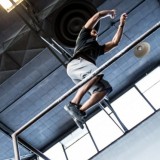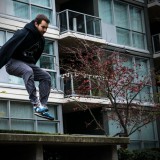What Happens When We Wear a Mask While Exercising?
One of the most visible adjustments to our lives during the Covid-19 pandemic is the required use of face masks in public spaces. Initially the idea of wearing a mask during exercise was controversial, as the mask was perceived as a hindrance. Having acknowledged that, is it harmful to wear a mask during exercise? Not all masks are created equal, but the research generally suggests that exercising while masked is not detrimental to the athlete’s health. Here we examine the arguments of seven academic works tackling the topic of masked athletic activity, each of which selected a different set of metrics to address the same question.
Two studies described below had participants exercise with either no mask, a surgical mask, or an N95 respirator using maximal stress testing (led by Epstein) and incremental exertion testing (led by Fikenzer) respectively. The participants of another inquiry (led by Otsuka) completed a cardiopulmonary stress test both with a surgical mask and with no mask. One more study (led by Shaw) documents volunteers completing a progressive cycle ergometer exercise test wearing no mask, a cloth mask, and a surgical mask. The fifth investigation monitored volunteers of varying degrees of fitness who walked on a slightly inclined treadmill to simulate hiking (led by Wong). Here participants wore either a surgical mask or no mask. The sixth piece (written by Davis and Tsen), drawing on data gathered by other authors, specifically tackles the use of N95 respirators during exercise. The seventh and final work (led by Samannan) focused more narrowly on patients with chronic obstructive pulmonary disease, having the levels of oxygen in their blood tested before and after six minutes of walking. Looking at these articles together, we gain a fairly comprehensive understanding of how the use of masks affects athletic training.
Exercising while masked generally has no discernible influence on the athlete’s heart rate, and metrics such as systolic blood pressure, stroke volume, and cardiac work tend to be unaffected as well. The quantity of oxygen found in participants’ blood and muscle tissues is similar regardless of mask use, as is the quantity of oxygen consumed during exercise, the latter being only affected by the use of n95 masks. Respiration is either unaffected or affected depending on whether the mask being used is an N95 respirator. Power output appears to suffer little if at all. The one difference between masked and unmasked exercise that is clear is the discomfort associated with mask use, which is well worth preventing the spread of Covid-19. Overall, the research suggests that exercising while masked is safe, and perhaps less different from maskless exercise than one might expect. Even the Fikenzer study, which takes the most critical stance on masked exercise, concedes that FFP2 (N95) masks are far more of a hindrance than surgical masks. Most of the facts, taken together, suggest a conclusion in line with Shaw’s team, who argues that “for healthy, active people, wearing a face mask during vigorous exercise has minimal effect on arterial or muscle oxygen levels and no effects on exercise performance.”







